Results 21 to 30 of 35
-
 Tsikoteer
Tsikoteer

- Join Date
- May 2009
- Posts
- 406
December 16th, 2009 12:21 AM #21Totally agree, you gotta love the golden age of cars. I remembered watching Discovery Turbo featuring Ralph Lauren's entire classic collection of decades old Ferraris, Porsches, Lambos, and even Bugattis and Alphas. Interesting thing was, the McLaren F1 LM was included in this collection.
-
 Verified Tsikot Member
Verified Tsikot Member

- Join Date
- Mar 2008
- Posts
- 263
December 16th, 2009 02:42 AM #22
-
December 16th, 2009 12:29 PM #23
-
December 16th, 2009 03:56 PM #24
If you can see the blue italics - are snips from the entire context from the internet which I feel conveniet to draw into this information dump. It will be inconvenient to rummage through old files and photo's - but that is not of the essence.
There are more cars which became part of our growing up consciousness... as a kid - I was fascinated with old Mustangs, Beetles and Minis and of course the Countach... but these cars were not just a pop in the imaginations of the designers. They are merely evolution of concepts.
For instance... The side panel farings/ bezel designs of a Mustang is not there for no reason, the use of aesthetics as an art is in reality a science.
Before I go into that... let's enjoy some action films using a Lamborghini... The Countach in this film is probably not an original - a replica with probably a Hot Rod Ford V8 Engine... however, it still has that old Lambo aura in it. Enjoy.
[ame="http://www.youtube.com/watch?v=3y9fsDLaN7I"]YouTube- Lamborghini Countach[/ame]
[ame="http://www.youtube.com/watch?v=H0wgFPE632A"]YouTube- Cannonball Run 1 and 2 - Lamborghini Countach[/ame]Last edited by ehnriko; December 16th, 2009 at 04:11 PM.

-
December 16th, 2009 04:44 PM #25
Let's go back to 1800's... what did the very first automobile really looked like.
It's not really the Otto-mobile of Mercedes - that was what was taught us - but that is actually the first Petrol-run automobile.
The very first one is actually a Hydrogen powered vehicle... It has a balloon with stored Hydrogen and Oxygen gas and it ran with a Volta Ignition in the engine. DEsigned and Built by Isaac De Rivas from Switzerland - as follows.
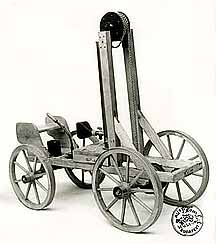
In 1807 Francois Isaac de Rivaz of Switzerland designed the first internal combustion engine that ran inside the first automobile. This first experimental prototype was powered by hydrogen gas and oxygen. The Rivaz car stored compressed hydrogen gas in a balloon and it had an electrical Volta cell ignition.
1860
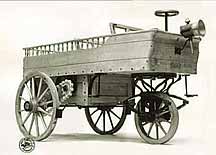
In 1860, Etienne Lenoir of France invented the 1-cylinder, 2-stroke Hippomobile. The Lenoir Hippomobile was so named because it received its fuel by electrolyzing water and running the hydrogen through the small horizontal engine. The Hippomobile engine ran on "natural cycles" with an uptake of fuel mixture and a down stroke combusting the exhausted fuel.
Later, Lenoir adapted the engine for various gases such as coal gas. Around 350-400 of the Lenoir gas motors were built and sold.
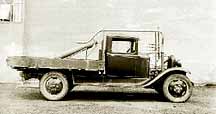
In 1933, the Norsk Hydro power company converted one of their small trucks to run on hydrogen gas. The Norsk Hydro truck contained an onboard ammonia reformer to extract hydrogen and run it through its internal combustion engine.
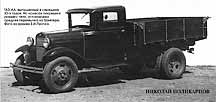
The 1941 GAZ-AA truck was created out of necessity by Mr. Boris Shelishch. During WWII, the Nazis had surrounded Leningrad, Russia and cut off supplies. Petroleum was running low. So, military technician Boris Shelishch stepped in an converted a GAZ-AA truck to run on hydrogen gas. After receiving orders from top commanders, Boris Shelishch and his crew were able to convert 200 GAZ-AA trucks in 10 days to run on hydrogen and demonstrated that they burned cleaner and longer than those that had run on petrol
Source: http://www.hydrogencarsnow.com/hydro...s1807-1986.htm
The Use of Hydrogen for propulsion is not really new at all, however - this alternative fuel didn't get much popularity nor attention... moreover, this fuel technology was not even considered by most design studios. There were probably some but one Race Car is in the recorded history was used in racing... Rally Racing to be more specific.
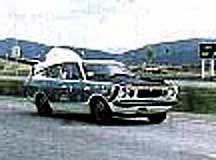
In 1975, the Musashi 2 was a passenger car that ran in the SEED Rally in the USA. The Musashi 2 used a four-stroke engine with manifold injection and ran on liquid hydrogen for propulsion.
Emphasis were not much on building a heritage but merely presenting an alternative fuel technology. It was also not profitable and building a taxation platform was not easy on this area - until now.Last edited by ehnriko; December 16th, 2009 at 04:49 PM.

-
 Verified Tsikot Member
Verified Tsikot Member

- Join Date
- Mar 2008
- Posts
- 263
December 16th, 2009 05:09 PM #26
-
December 16th, 2009 05:13 PM #27
Are we seeing already a pattern here?...
Ever wondered why or where have we heard it?... History repeating itself?
Hydrogen to Electric... to Petrol... to Diesel... hmmmm....
At any rate, this is besides the point. We are citing only the design evolution of the carriage, lines and aesthetics... where they are coming from... whats been lost and whats retained.
There is indeed a huge leap in the last 50 years or so... in the 1960's - Astro Boy and Gigantor were probably the first Manga Cartoons that have made an influence to most modern Cartoons like Voltes V, Mazinger Z, Grandaizer, Daimos... Ultraman and now Transformers. The idea of using Japanese Shogun Warrior Helmets as a theme combined with ancient Knight Body Armor design theme integrated into the Cartoon Characters and theme... Allowed an unlimited playground for the mind of young designers.
Although the French are more advanced with this, the Japanese and Italians were not really far behind. While keeping the old traditional radiator lines for most cars... the Angry Look was slowly taking shape after 1996 when the use of Shielded Clustered headlamp assembly became an industry practice.
Designers were now able to play with Headlamps and Tail lamp designs as they wish on the fly.
Before 1996, Cars where limited to OEM - Over the Counter items like Headlamps and Tail Lamps and they have also practice platform sharing with many cars. Today, there is virtually more freedom of design.
Here's a little history about headlamps...

The earliest headlamps were fueled by acetylene or oil and were introduced in the late 1880s. Acetylene lamps were popular because the flame was resistant to wind and rain. The first electric headlamps were introduced in 1898 on the Columbia Electric Car from the Electric Vehicle Company of Hartford, Connecticut, and were optional. Two factors limited the widespread use of electric headlamps: the short life of filaments in the harsh automotive environment, and the difficulty of producing dynamos small enough, yet powerful enough to produce sufficient current.[2] "Prest-O-Lite" acetylene lights were offered by a number of manufacturers as standard equipment for 1904, and Peerless made electrical headlamps standard in 1908. In 1912, Cadillac integrated their vehicle's Delco electrical ignition and lighting system, creating the modern vehicle electrical system.
"Dipping" (low beam) headlamps were introduced in 1915 by the Guide Lamp Company, but the 1917 Cadillac system allowed the light to be dipped with a lever inside the car rather than requiring the driver to stop and get out. The 1924 Bilux bulb was the first modern unit, having the light for both low (dipped) and high (main) beams of a headlamp emitting from a single bulb. A similar design was introduced in 1925 by Guide Lamp called the "Duplo". In 1927, the foot-operated dimmer switch was introduced and became standard for much of the century. The last vehicle with a foot-operated dimmer switch was the 1991 Ford F-Series. Foglamps were new for 1938 Cadillacs, and their 1954 "Autronic Eye" system automated the switch between high and low beams.
The standardised 7 in (178 mm) round sealed beam headlamp was introduced in 1940, and was soon required for all vehicles sold in the United States. Britain, Australia and other Commonwealth countries, as well as Japan, also made extensive use of 7 in. sealed beams. With some exceptions from Volvo and Saab, this headlamp size format was never widely accepted in continental Europe, leading to different front-end designs for each side of the Atlantic for decades.
The first halogen headlamp for vehicle use was introduced in 1962 by a consortium of European bulb and headlamp makers. Halogen technology increases the efficacy (light output for given power consumption) of an incandescent light bulb and eliminates blackening of the bulb glass with usage. These were prohibited in the US, where non-halogen sealed beam lamps were required until 1978. Starting that year, sealed beams became available with halogen bulbs inside. These halogen sealed beams remain available, 25 years after replaceable-bulb headlamps returned to the US in 1983.
High-intensity discharge systems were introduced in 1991's BMW 7-series. European and Japanese markets began to prefer HID headlamps, with as much as 50% market share in those markets, but they found slow adoption in North America. 1996's Lincoln Mark VIII was an early American effort at HIDs, and was the only car with DC HIDs.

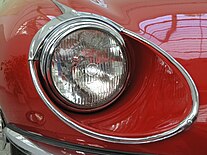
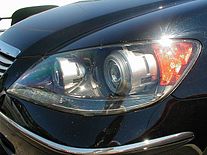

-
December 16th, 2009 05:46 PM #28
To use Hydrogen for a Jet engine would be uneconomical... unless theres a more efficient way to make it... but AFAIK - Jet engines or turbines work great with slow burning kerosene.
Hydrogen would be better as Rocket Fuel.... well - they are actually used for Rockets... Liquid Hydrogen that is.
As fuel for the normal I.C.E. - well - it does work of course. No doubt about it. But todays research is taking it to a more efficient way of converting power or energy into another form in order to get the most out of its' latent potential. For example, Hydrogen if used in a reverse process of electrolysis - like that of Fuel Cells... it will make electricity and water vapor as it's by products. when it is passed through a membrane with Oxygen.... the catalyzing effect brings Direct Current directly usable for electric motors. This will eliminate the need to carry ultra-heavy batteries. Making Hydrogen is one thing... making the Fuel Cell is another. But it's the over-all interplay that allows a more convenient utilization of power.
Now what does this have to do with the vehicle design? one may ask.... Simple.
The platform used should be manifested outside the skin of the product.
For example... When the T-Rex was undergoing conceptual stages... many ideas were taken into account. Including my old Trima Concept which was made available in public domain in early 2000's.
But the parameters for the design process includes but not limited the following:
It should give a hint that it is still first and foremost a motorcycle.
That's the reason why it has adopted articulated fenders on the two front wheels... and has adopted the cladding of mostly motorbike inspired panels, headlamps and tail lamps and other details akin to Big Bikes.
In the same tradition why the Honda FX Clarity is made so.... it should be able to give a hint that it's a different car. Although limited in design playground, the challenge was taken with enthusiasm.

How honda played it?... they made the bumper Anodized Satin Aluminum Finish - a styling not commonly used anymore specially to combine with the modern shape of the cars where bumpers are integral to the over-all shape. It was - a clever way to do it. Somehow, like adding Parsley to a Dilis or Tuyo Gourmet meal presentation.
The object is to make it stand out as something different. The playing with contrast of color and materials were the focus of this design innovation.Last edited by ehnriko; December 17th, 2009 at 10:59 AM.

-
December 17th, 2009 11:30 AM #29
Another Science to an Art or Art of Science is how good designers play around with components to create a good face for a car.
Every car has a face whether is old or new.
A cars face gives a hint about the era it was made and about it's character or attitude - Well, it should - and thats precisely the idea.
One notable example is the Volkswagen Beetle. Many people regard this car as their family pet, or part of the family. Every beetle has a face and personality/ Car-acter. But mainly, every beetle has a cheerful face.
We begin with the round eyes... a wide-eyed pet - likened to a dog. The cheerful smile - which is represented by the roundish bumpers... Which if viewed from a normal angle seems to project a grin or a subtle joy. Even without the bumper, the rounded Overhang bottom also suggests a smile whether back or front view.
The organic lines and curves of the old classic beetle is also a clever way to put practicality into the science of the art. Only one curvex glass was used and it is only a small size at the rear... all the chunky windows including the windshield are flat surfaced but has blended well into the egg-shaped body shell. The Bulbuous theme for the fender, hoods, trunk and pillars as well as roof line form a symmetry figure which comforms with the "Golden Ratio"... (more about 'golden ratio' in Disenyo Pilipino website).
Actually - the Golden Ratio principle is basically just a universal law of beauty, balance and equilibrium even in science. Just look at how much water is in your body... How much water is in this earth.... It's all following the Golden 20 Rule - It's what is also known as Wilfredo Parreto's Law or Logic - you can use this law in almost everything you do, even in business. It follows that everything is following the 80/20 rule.
Going back to the VW Bug... When Ferdinand Porsche designed it, it was intended for the people - as commissioned by Adolf Hitler. Porsche designed the whole car in its entirety, from the body shell, to the engine, to the drive train - even to the last bolt and nut. The best designs can really come from an artistic engineer or an engineering innovative artist (otherwise known as Creative Geniuses)
It is with good technical background that one can one come up with a better design since all the other technical considerations or margin lines will be observed all throughout the design process.
It also helps when one is into racing himself - as Dr. Porsche himself was.
The continuous improvement motto (similar to the working policy exercised by Toyota) is basically inherent with the designer and/or engineer which reduces design process time.
Bad designs are normally coming from Artists without any technical backgrounds at all. At least a little understanding should help. There were many flop designs which I am not keen in showing here anymore. I also call these designs - WHIMSICAL for they are a product out of Whim without scientific basis or a lack of it.
It doesnt have to be complicated... as what the VW Beetle Type 1 is. Simple, yet - Clever.

Now what if you want to portray POWER and Attitude on a Cars face - in order to justify it's speed and performance?... Then it naturally will turn into this...

Two very different cars, catering two different markets... One signature, One face.... see the consistency of the designer/ engineers' signature?
These cars do not have the radiator grill lines or section since they are Rear-Engined - however, you can still see a clear face from them. They have eyes, a nose... a mouth or lip.... a Head - a Face.... a Personality... a Car-acter - an Expression.
The images were borrowed from the internet.Last edited by ehnriko; December 17th, 2009 at 11:39 AM.

-
 Verified Tsikot Member
Verified Tsikot Member

- Join Date
- Mar 2008
- Posts
- 263
December 17th, 2009 11:39 AM #30
[SIZE=4]Was thinking of the jet and rocket powered speed smashers that got me confused and mixing up between a rocket and jet engine. What I meant was the rocket engine as jet engines do not use hydrogen as fuel nga, mostly kerosene these days when av-gas got to be too expensive during the early '70's oil crisis.[/SIZE]












Just had a chat with a friend in upper management of Nissan Phil. They are releasing two new...
2025 Nissan Kicks